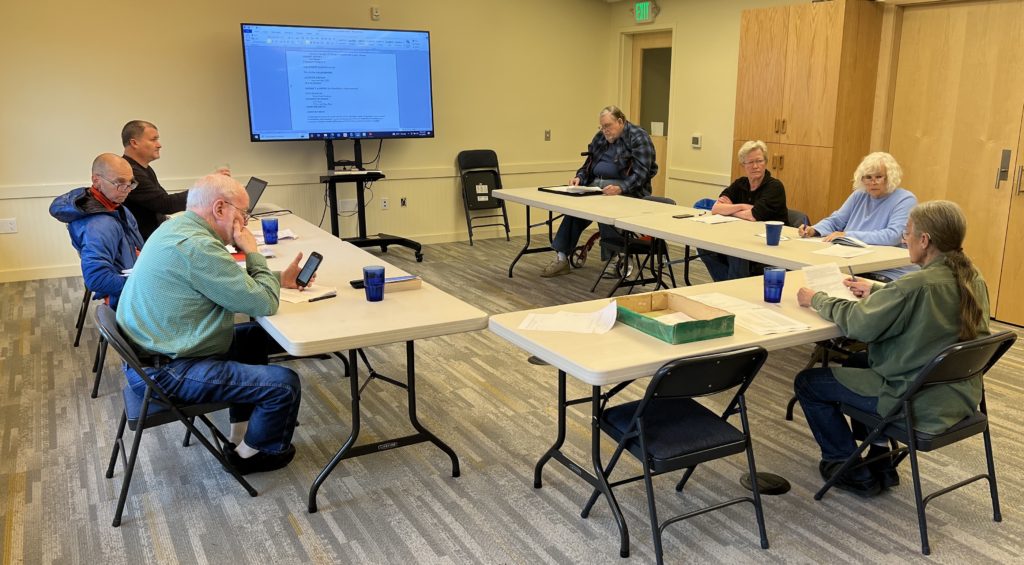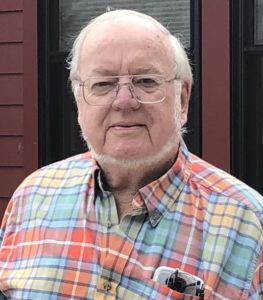
By QUINTON SMITH/YachatsNews.com
YACHATS – The Yachats Rural Fire Protection District board is betting big that history won’t repeat itself.
The board voted 4-0 this week to ask district voters in November to approve a new tax levy that would add $300 a year onto the tax bill for property assessed at $300,000.
The district has been struggling financially for five years, getting a short reprieve this year only because it used $338,000 in proceeds from the sale of its old fire station to balance its budget.
The board will seek a new, five-year tax levy of $1.59 per $1,000 of assessed property value – while letting an existing levy of 59 cents expire. That means the net increase is $1 per $1,000 of assessed property value.
Voters soundly defeated a levy of the same amount last November – the first levy rejection in the district’s 73-year history — but it would have been in addition to the 59 cent levy.
The board is now hoping that by letting the smaller levy expire and doing a better job of campaigning for the levy that voters will OK it. But it has struggled during its public discussions since last fall on ways to campaign more effectively.
In approving the tax levy request Monday, the board also passed its 2022-23 budget of $1.358 million.
Longtime board member and treasurer Ed Hallahan said the district’s budget does not include enough money to replace expensive equipment and will struggle to keep up with rapidly rising costs.

“It’s bare bones and it’s not enough,” Hallahan said during Monday’s board meeting. “The levy needs to match the budget that will allow us to survive while we continue this discussion” of how to improve finances.
Board member Drew Tracy said the district does not have adequate money in a contingency fund and not enough money to hire more firefighters/paramedics.
“We’re just trying to stop the bleeding right now,” said board chair Katherine Guenther.
Based on staff projections, the levies would generate $1.58 million in 2023-24 and leave the district with a cash carryover of $242,000 its first year. It currently has no cash carryover. Based on increased costs, the projected cash carryover drops to $161,000 in 2024-25, $81,000 in 2025-26 and goes negative in 2026-27.
But even if voters approve a new levy in November, the district wouldn’t get any of those taxes for a year – necessitating another bare bones budget for 2022-23 and taking out another bank loan during the summer to pay operating costs until property taxes arrive in November.
The district has used bank loans since 2018 to cover operating expenses from late spring to November as rising costs outpaced revenue from property taxes. It repays the loan in November or December after property taxes arrive – and then repeats the process the next year.
How tax base and levies work
The fire district relies on two levies and a permanent tax base to fund its yearly operating costs. Here’s how they work:
- The district’s permanent tax base, established in 1997, is 29 cents per $1,000 assessed property value;
- A three-year levy that started in 1999 carries a tax rate of 61 cents per $1,000 of assessed property value; it was last renewed in 2019 and the board intends to seek a renewal – and maybe a small increase – in May 2023;
- A three-year levy that started in 2008 is 59 cents per $1,000; it was last approved in May 2018 but will be allowed to expire this year;
- In total, the tax base and two levies add up to a tax rate of $1.49 per $1,000 assessed property value or $447 a year on property assessed at $300,000.
- If approved, the proposed $1.59 levy would take effect after the 59 cent levy expires, making the district’s overall tax rate $2.49 per $1,000 assessed property value. That would result in a property tax bill for the fire district of $747 per year – $300 more than it is currently.
The district also has the building bond for its new fire station just north of Yachats that carries a tax rate of 68 cents per $1,000 assessed value. That costs the owner of property assessed at $300,000 an additional $204 a year. But bond money can’t be used for year-to-year operating costs.


